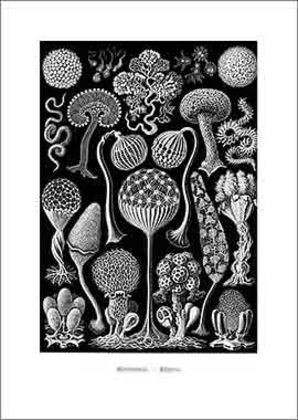This piece was originally published in issue 3.16 (Winter 2012)
Lorine Niedecker’s
sublime
slime-
song
in the forthcoming selected poems in French is going to be
sublime
chanson
du limon
or
sublime
berceuse
limoneuse
or
vibrante
voix
de vase
which fact I learned from Nicolas Pesquès, one of three co-translators of Louange au lieu et autres poèmes. Each of these translations carries its own resonance, of course, and Nicolas reminded his Anglophone audience at the University of Denver last week that the translation was for the French ear, not the North American one. Cole Swensen and others preferred the sound of “sublime/chanson/du limon,” which Nicolas assured us had no music for the French oreille. I was pushed to think about what I hear in Niedecker’s slime — which is Darwin, creation, beginnings, life — tones not carried (to my American mind) by limon, which means silt, or vase, which, besides silt, is also sludge. The choice of berceuse (lullaby) for song is interesting, because it does touch on the feeling of childhood (early life) Niedecker captures in her slime. But as Nicolas said, a lullaby is for putting a child to sleep, and this is clearly an awakening of energy rather than bedtime.
There’s lots more to talk about in the translation choices — like what to do about the alliteration, the visual elision between sublime and slime or the fact that LN makes a million things happen with ONE word per line (Robert Urquhart, also present, commented that he reads Niedecker word-by-word), or what to do with the peewee that immediately precedes these lines, and about translation in general, but I want to go where slime leads me, which is to slime molds.
A notable example of self-organization of a more complex organism is the slime mold, which starts life as spores, which become amoeboid cells that repel one another. When food becomes scarce, the cells no longer repel each other but aggregate to form a sluglike creature that slithers over the surface of the soil. From this undifferentiated mass of cells a stalk grows, at the top of which is formed a fruiting body that develops spores. The fruiting body bursts and the spores are distributed, and so the life cycle is repeated time and time again. It is clear that a slime mold cell has the potentiality to be an amoeba, a stem cell, a fruiting body, and a spore.
—Back to Darwin, John B. Cobb
There are all kinds of wonderful terms associated with this wild behavior, like “swarming motility” and “quorum sensing” (“quorum sensing can function as a decision-making process in any decentralized system” [http://en.wikipedia.org/wiki/Quorum_sensing]), a function that could prove useful to humans, requiring us to become more sensitive to “assessing the number of other components [we] interact with.”
Watch some slime mold motility in action . . .
I guess slime molds are heterokaryotes (different kinds of nuclei in one organism).
Lynn Margulis (1938-2011) was the first to theorize an evolution that imagines symbiosis as its origin, when one single-cell organism (prokaryote) cooperated with or tried to eat another, and thus the first eurkaryotic cells were formed (eventually leading to us). For years, she was called a crackpot, but her notions are now orthodoxy. Besides the fact that she taught in Emily Dickinson’s hometown, she seems to have a bead on poetic thought. In her book What is Life? she discusses autopoiesis, a concept I became somewhat obsessed with. The term obviously has appeal to poets, though here it’s a biological function — self-production or self-creation:
Autopoiesis was originally presented as a system description that was said to define and explain the nature of living systems. A canonical example of an autopoietic system is the biological cell. The eukaryotic cell, for example, is made of various biochemical components such as nucleic acids and proteins, and is organized into bounded structures such as the cell nucleus, various organelles, a cell membrane and cytoskeleton. These structures, based on an external flow of molecules and energy, produce the components which, in turn, continue to maintain the organized bounded structure that gives rise to these components.
An autopoietic system is to be contrasted with an allopoietic system, such as a car factory, which uses raw materials (components) to generate a car (an organized structure) which is something other than itself (the factory).
[http://en.wikipedia.org/wiki/Autopoiesis]
Both functions (autopoietic and allopoietic) seem useful in thinking about the poem (and certainly about Niedecker’s poems), but what became most fruitful to me was thinking of any organism’s drive to self-regulate/survive, and the human drive in this respect toward things like happiness, the pursuit of which so often wreaks havoc on other living communities. The first part of the poems I’m working is called “Make Yourself Happy,” and is meant to be hortatory and instructive. They are poems trying to teach me how to live.
Stick this
piece of meat in your
mouth to
make yourself happy. It’s a good one.
***

Ernst Haeckel’s mycetozoa slime molds (1904)
“In 2006, researchers at the University of Southampton and the University of Kobe reported that they had built a six-legged robot whose movement was remotely controlled by a Physarum slime mold. The mold directed the robot into a dark corner most similar to its natural habitat.”
[http://en.wikipedia.org/wiki/Mycetozoa]

